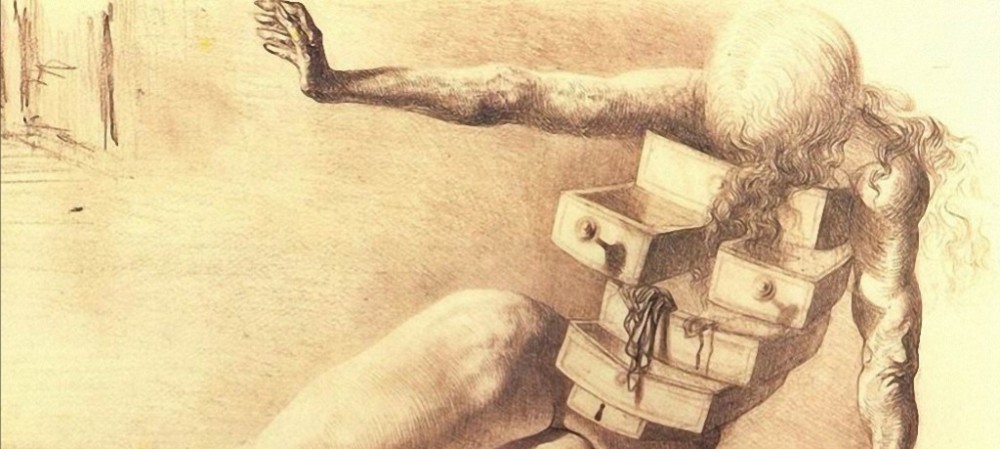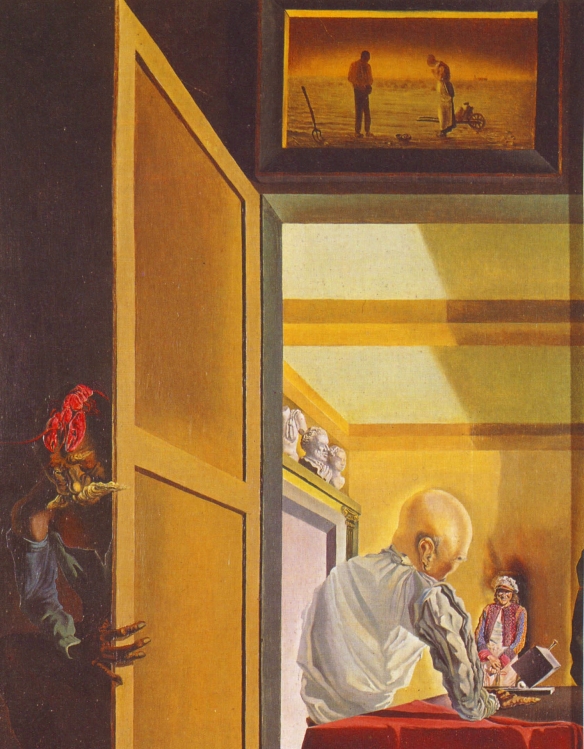Una serie de homenajes a Millet, que Dalí realiza nacidos de la observación de un calendario postal colgado en la pared de la clase, con el Ángelus de Millet, esta imagen siempre le obsesionó.
El mito trágico del Ángelus de Millet forma parte de los fantasmas profundos de Dalí.
A series of tributes to Millet, Dali performs born of the observation of a postcard calendar hanging on the wall of the class with the Angelus of Millet,this image always obsessed.
The tragic myth of Millet’s Angelus is part of the deep ghosts of Dalí.
EL ÁNGELUS DE MILLET (1857-1859)
MILLET’S ANGELUS (1857-1859)
La escena representa a dos pastores rezando en el campo, antes de que salga el sol y de empezar a trabajar, al lado de una pequeña carretilla.
La obsesión de Dalí llegó a tal punto que llegó a pedir a los técnicos del Louvre que estudiaran la pintura, ya que estaba seguro de que el cuadro escondía algo, porque la hora no correspondía a la hora en que se reza el ángelus.
Al hacer una radiografía del cuadro, advirtieron una mancha que parecía un pequeño ataúd. Ante ese descubrimiento las dos figuras adquirieron su significado real: no están rezando antes de empezar a trabajar, sino que son los padres que acaban de enterrar a un hijo. La mujer aparentemente sumisa, se encuentra según el, en una posición precedente al acto de agresión, esta bucólica escena se transforma en la lucha entre sexos, siendo la campesina una mantis religiosa antes de la copulación.
La carretilla, femenina es en numerosas representaciones populares, expresión de erotismo campesino.
The scene depicts two pastors praying in the field before sunrise and start working next to a small truck.
Dalí’s obsession reached such a point that came to ask technical Louvre to study painting since he was sure that the box was hiding something, because the time was not for the time you pray the Angelus.
When an X-ray picture, warned a stain that looked like a small coffin. Before this discovery the two figures acquired their real meaning: they are not praying before starting work, it is the parents who have just bury a child. The seemingly submissive woman, is depending on, in a previous position to act of aggression, this bucolic scene becomes the struggle between the sexes, with the peasant a praying mantis before coupling.
The truck, female is in many popular representations, expression of peasant eroticism.
OBRAS DE SALVADOR DALÍ
SALVADOR DALI PAINTINGS
ATAVISMO DEL CREPÚSCULO (1933-1934)







